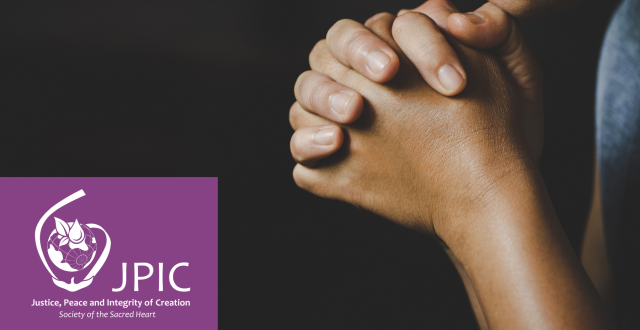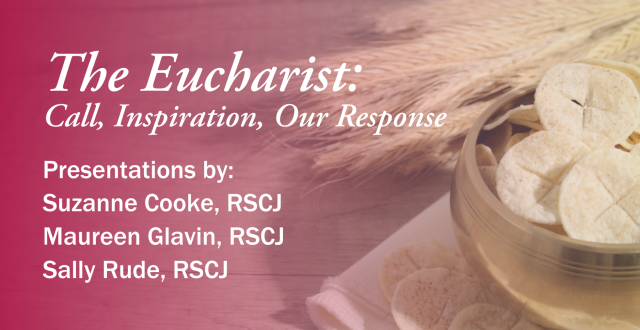August 15, 2019
Preaching for the Solemnity of the Assumption of Mary, Carolyn Osiek, RSCJ, offers a reflection on the promise of the day as revealed in the readings.
The feast of the Assumption means—that Mary is just as good as the guys.
There is Jesus, of course, and we tend to talk about his ascension and Mary’s assumption, as if he did it on his own and she needed some help. But if you look carefully at a good translation of the story of Jesus’ ascension in Acts 1:9, you will see that he too was lifted up and received into heaven on a cloud.
But Jesus and Mary are by no means the first to have been thought to go up out of this life to somewhere up there where God is. You will of course remember Elijah and his fiery chariot in 2 Kings 11. Even before him, Enoch was taken up by God and seen no more (Gen 5:24).
It’s not only biblical figures who were believed to be taken up to heaven, however. Livy reported this of Romulus, one of the mythic founders of Rome. Roman emperors were depicted being taken up that way: Emperors Augustus, Titus, and Constantine among them. Emperor Antoninus Pius and his wife Faustina are depicted heading for heaven, held up by a nude adult male winged figure (with fig leaf added in the Renaissance), on a massive column base in the garden of the Vatican Museum. Even one imperial womangot her own depiction of being conveyed to heaven: Sabina, wife of the emperor Hadrian. So the ascension of Jesus and the assumption of Mary are by no means unique. Rather, they conveyed a message to their world: Jesus and Mary rate with the great ones. The tradition of including Mary is surprisingly early, possibly late fourth or for sure early fifth century.
We might be tempted to think of a feast like this as quiet and peaceful, a time for calm rejoicing. Maybe the image in your mind is the assumption of Mary by Murillo, a very common one. Mary quietly joins her hands and looks upward, blue mantle flying, while a bunch of chubby little angels push her cloud heavenward.
But no. Our readings for the feast suggest something different. Being with the great ones isn’t peaceful; it means struggle. In our first reading from Revelation, the dragon threatens the life of the child. His mother must flee to protect him, like so many immigrant and refugee mothers, whose children are not rescued at the last moment as this one is. It’s a struggle for survival for this woman and her child, a reflection of the struggle that continues age after age in our world.
The familiar Gospel reading from Luke portrays Mary as she journeys to visit her pregnant cousin, Elizabeth, and the encounter of the two expectant mothers and their as-yet unborn sons. Mary’s response is the ecstatic song that we usually call the Magnificat. Those who pray Evening Prayer regularly recite this canticle, and perhaps familiarity makes us numb to its promises and its threats.
Mary’s song is not peaceful. Rather, it is unsettling. It proclaims the upheaval of quiet lives. The proud will be scattered. The mighty will be cast down from their thrones. And the “lowly”—the connotation of the word in Greek, the tapeinoi, means “pressed down,” or oppressed, not those who practice the virtue of humility—they will be raised up, and the hungry will be “filled with good things.” So look out, those who sit on thrones of worldly power!
Now the problem with this is that in Luke’s Gospel it’s all in the past tense, as if it has already happened. A quick look around our world today prompts the wonderment: What? Let’s leave that question for a moment and go to the second reading, which I skipped earlier because I think it’s better to deal with it last. In 1 Corinthians 15, Paul is grappling with his attempt to explain the mystery of the resurrection to people who apparently were pretty skeptical about the idea. Paul too speaks of a struggle. In the end, Christ will hand over everything to God his Father, once he has “put all his enemies under his feet” an allusion to Ps. 110:1, which had already been considered to refer to the Messiah.
But, says Paul, “the last enemy to be destroyed is death.” The resurrection of Christ has begun to put that defeat of death in motion. We’re not there yet, and that’s why Luke’s Mary in her Magnificat can see from the same perspective that Paul sees here: that last enemy will be destroyed, and when that happens, that’s when we can say that all God’s promises have been accomplished.
So why celebrate the feast of the Assumption of Mary? Because of what it promises. Mary too is caught up in this great process of realizing the effects of the resurrection. It’s not a promise of peace during the course of the process; rather, it’s a promise of tension and struggle. We live in time and we touch eternity.
I have a favorite poem that speaks to me of all of this: G. K. Chesterton’s Regina Angelorum, about the Assumption of Mary. I share with you its last two verses, as Mary explores her new heavenly home.
But ever she walked till away in the last high places,
One great light shone
From the pillared throne of the king of all the country
Who sat thereon;
And she cried aloud as she cried under the gibbet
For she saw her son.
Our Lady wears a crown in a strange country,
The crown he gave,
But she has not forgotten to call to her old companions
To call and crave;
And to hear her calling (one) might arise and thunder
On the doors of the grave.
(G.K. Chesterton, 1925)



